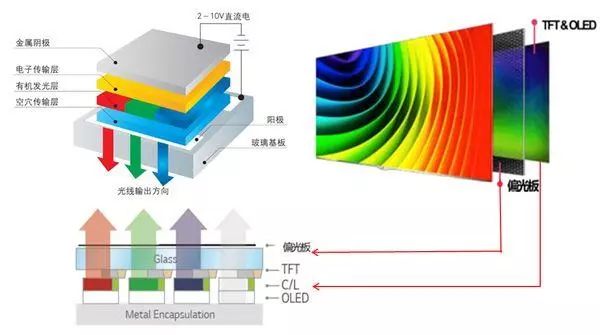In 2018, various smartphone manufacturers were fiercely promoting their products equipped with OLED screens, as if products without OLED screens were considered inferior. But is OLED really that much more advanced than LCD? Which is better, LCD or OLED? Why did the iPhone XR only use an LCD screen?

Let’s compare the advantages and disadvantages of both types of screens to see what differences exist between LCD and OLED.
1. Screen Flexibility: OLED screens have flexibility and can be bent, which is beneficial for the design layout of the front components of the phone;
2. Weight and Thickness: OLED screens are much lighter and thinner than LCD screens of the same size, approximately one-third the thickness, and weigh less;
3. Light Emission Efficiency: OLED has a higher light emission efficiency, consumes less energy, and is more power-efficient;
4. Picture Quality: OLED displays have better visual effects, vibrant colors, and outstanding expressiveness;
5. Response Speed: OLED has a faster response time, and even when displaying fast-moving images, there is no motion blur;
6. Shock Resistance: OLED has a solid structure without using liquid crystal materials, making it superior in shock resistance;
7. Low Temperature Resistance: OLED performs better at low temperatures, even functioning normally at minus forty degrees;
8. Technology Maturity: LCD technology is more mature;
9. Price: LCD screens are cheaper and more affordable;
10. Visual Fatigue: OLED screens have overly vibrant and saturated colors, which can cause eye strain and visual fatigue after prolonged use.

From the comparison, it is clear that OLED has many advantages. So, does that mean high-end phones must choose OLED? Not necessarily, as it comes down to practicality and balance. In our daily lives, if one is not particularly sensitive, the differences between the two may not be very noticeable.
Currently, Samsung produces the best quality OLED products in the world, and the iPhone X uses Samsung’s AMOLED screen, which performs excellently in terms of color, power consumption, and thinness, providing a perfect display effect that integrates well with the device. This is also why the iPhone X remains very popular even after more than a year since its launch. However, the Samsung OLED screens purchased by Apple are quite expensive, and cheaper options cannot achieve such a perfect display effect. Therefore, the reason the iPhone XR uses an LCD screen is to save costs, as the iPhone XR is positioned as a mid-range phone with a relatively lower price.
In the long run, OLED screens are more advanced and have inherent advantages. As manufacturing processes and technologies continue to mature, the advantages of OLED will become more evident, making it the trend for future smartphone screen development. Of course, prices will not remain high forever. By then, not only will Apple phones fully adopt OLED screens, but other brands will also incorporate OLED into their new smartphone products, providing users with a superior experience.
 If you think this is good, click here↓↓↓
If you think this is good, click here↓↓↓